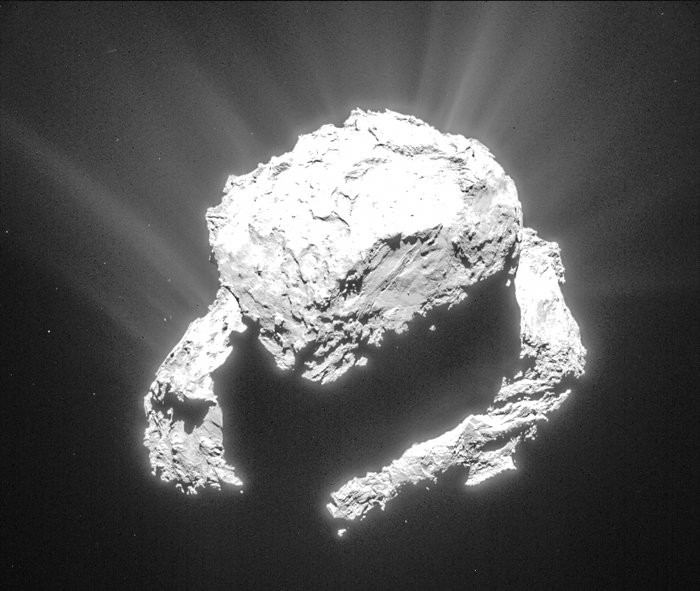Rosetta: Oxygen around comet 67/P challenges what we know about Solar System formation

In a shock discovery, Rosetta scientists have found oxygen in the gas cloud around comet 67/P, which they say challenges our current models of how the solar system formed. This is the first time O<sub>2 has been found in a cometary coma and is only the third time molecular oxygen has been found outside our solar system.
An international team of scientists published their findings in the journal Nature. Study author Kathrin Altwegg, from the University of Bern, said it is the "most surprising discovery we have made so far in 67/P" as oxygen was not one of the molecules they were expecting to find. It was such a surprise she said that initially they "went into denial" over what they were seeing. After making sure their results were correct, they then looked to find out how the O<sub>2 could be there.
They found the comet had abundances ranging from between 1% and 10% relative to H<sub>2O and that these ratios remained stable. This was important as it suggests the primordial O<sub>2 had been incorporated into the nucleus of the comet when it was formed: "Current Solar System formation models do not predict conditions that would allow this to occur," the team wrote.
André Bieler, from the University of Michigan, said their continued observations showed the ratios of O<sub>2 stayed constant over several months. As comets shed their outer layers, fresh material gets exposed. Because the ratios stayed constant, this means O<sub>2 has to be present throughout the whole comet.

As a result, this raises key questions – how did it get there and how did it survive for such a long time. In the study, they propose two theories – one involving radiolysis, where high energy radiation breaks up bonds in the ice transforming the H<sub>2O into O<sub>2 – and another involving the gas phase when the comet was formed, during which O<sub>2 was incorporated into the comet and was then cooled very rapidly.
Regardless of how it got there, the scientists say the find means our current understanding of how the solar system formed needs reassessing. Models suggest a heavy inflow of material from the outside of the Solar System towards the centre, then a heavy outflow that resulted in mixing of material. This system does not allow for icy grains containing oxygen: "Once these grains get closer to the sun, they sublimate and you lose the oxygen immediately. They were never mixed," Altwegg said.
Bieler added: "All models say it shouldn't be there or survive for so long, so this tells us something about the building process of our solar system in that it has to be very gentle − that those ice grains have never been heated enough to be reprocessed. Comets are the least processed bodies in the Solar System and now we have evidence that at least a significant part of this comet has in fact survived the formation of our solar system, which makes them very pristine objects."
In terms of the implications of the paper, the authors did not speculate on what it could mean for oxygen or life on Earth. They did, however, say they will now be looking at other comets to look for O<sub>2 – both Bieler and Altwegg agree it is unlikely 67/P is a particularly special comet: "The only other comet we can have a look at is Halley, and at the moment we are going back to 30-year-old data to see if we see any signs of oxygen...but that's not part of this paper," Altwegg said.
© Copyright IBTimes 2025. All rights reserved.






















